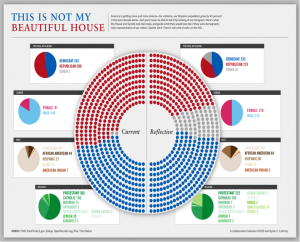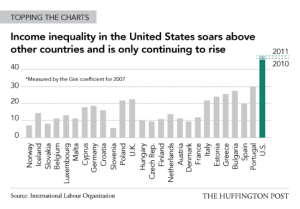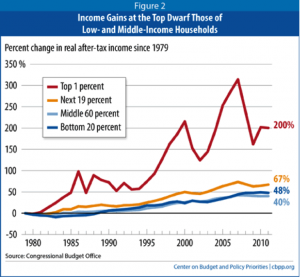Written by Sherry Zhang
“There has always been a tradition of pathologizing the behaviors of the African American poor and working class, especially women.” (Cohen, 2004; p. 34).
The topic of discussion in class last week was on race and political behavior. We examined readings that discussed differences in voting, elections, and political participation, by racial and ethnic groups. Group consciousness, the notion that collective action is the best way to improve a group’s social standing (McClain et al., 2009), was contested. Our insightful discussion leader argued that group consciousness could vary considerably within an umbrella racial or ethnic category, and that socioeconomic background, immigration status, and religion could contribute to differences in political engagement. In this blog post, I would like to add onto this claim and recognize the need for intersectionality within political movements with regards to gender and sexual identity. I will narrow my discussion to understanding the importance of the #BlackLivesMatter and #SayHerName movements. I would also like to critique the role of social science researchers in pathologizing the role of women in explaining “deviant” behaviors among Blacks.
Central to this week’s readings is the understanding that group consciousness is not necessarily guaranteed within a racial and ethnic category, and that invisibility is a persistent theme for those who do not identify as cis, heterosexual, white men. Alicia Garza, one of the creators of the #BlackLivesMatter online platform, describes some of the tension within the movement, by stating that “being Black queer women in this society (and apparently within these movements) tends to equal invisibility and non-relevancy” (2014). Cohen also recognizes that power dynamics exist within intersections of race, gender, and sexual identity (2004, p. 29). The #SayHerName movement was developed to recognize and center the police violence that Black women face, to eliminate their invisibility within the #BlackLivesMatter movement, and to bring awareness to the disproportionate incarceration rates, sexual assault, and police brutality that Black women face (AAPF, 2015).
Within academia, it is also important to note the ways in which intersectional frameworks have been largely ignored in studies of Black communities. Cohen (2004) describes how social science researchers have framed rising female-headed households and non-marital births as causes of poverty and the growing “underclass” (DuBois, 1899; Moynihan, 1965; Wilson, 1987). These explanations of “resistance,” which imply heteronormative policy solutions such as marriage promotion programs, do not recognize the role of human agency or context in shaping choices. She thoughtfully hypothesizes that “deviant” acts are “more often attempts to create greater autonomy over one’s life, to pursue desire, or to make the best of very limited life options” rather than intentional “deviance” (Cohen, 2004; p. 40).
This week’s readings provided several implications and needs to recognize anti-Black racism within white and non-Black communities of color, and to also recognize sexism within explanations of “deviant” behavior among Black communities. They also emphasized the need to address intersections of race, gender, and sexual identity when studying Black politics, and recognize the need to see acts of “deviance” as acts of agency (Cohen, 2004). Understandings of group consciousness cannot solely be restricted to explaining political behaviors of umbrella racial and ethnic categories.
References
African American Policy Forum. (2015). #SayHerName: Resisting Police Brutality against Black Women. A Social Media Guide. http://static1.squarespace.com/static/53f20d90e4b0b80451158d8c/t/555e2412e4b0bd5f4da5d3a4/1432232978932/SAYHERNAME+Social+Media+Guide.compressed.pdf
Cohen, C.J. (2004). Deviance as resistance: a new research agenda for the study of black politics. Du Bois Review, 1:1, 27-45.
DuBois, W.E.B. (1899). The Philadelphia negro. Philadelphia: University of Pennsylvania Press.
Garza, A. (2014). A Herstory of the #BlackLivesMatter Movement. http://www.thefeministwire.com/2014/10/blacklivesmatter-2/
McClain, P.D., Carew, J.D.J., Walton, E., & Watts, C.D. (2009). Group membership, group identity, and group consciousness: measures of racial identity in American politics? Annual Review of Political Science, 12: 471-485. http://www.annualreviews.org/doi/pdf/10.1146/annurev.polisci.10.072805.102452
Moynihan, D.P. (1965). The negro family: the case for national action. Office of Policy Planning and Research: U.S. Department of Labor. http://www.dol.gov/oasam/programs/history/webid-meynihan.htm
Wilson, W.J. (1987). The truly disadvantaged: the inner city, the underclass, and public policy. Chicago: The University of Chicago Press.



